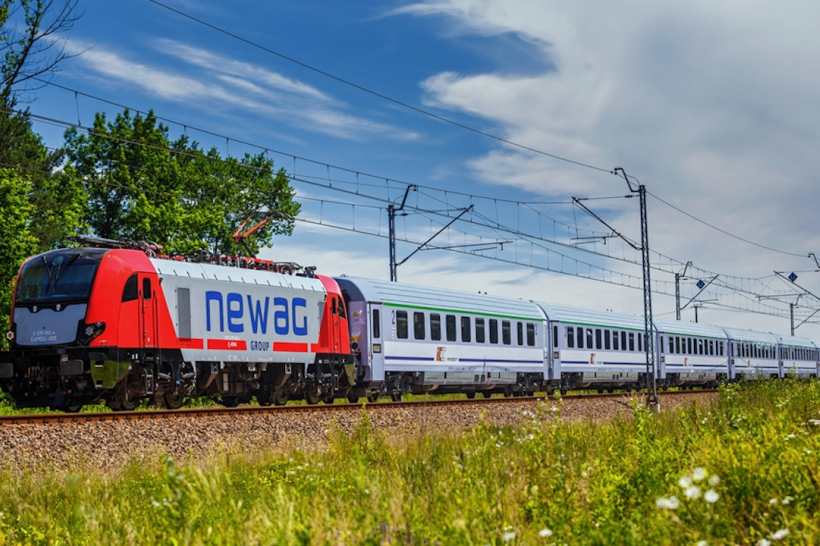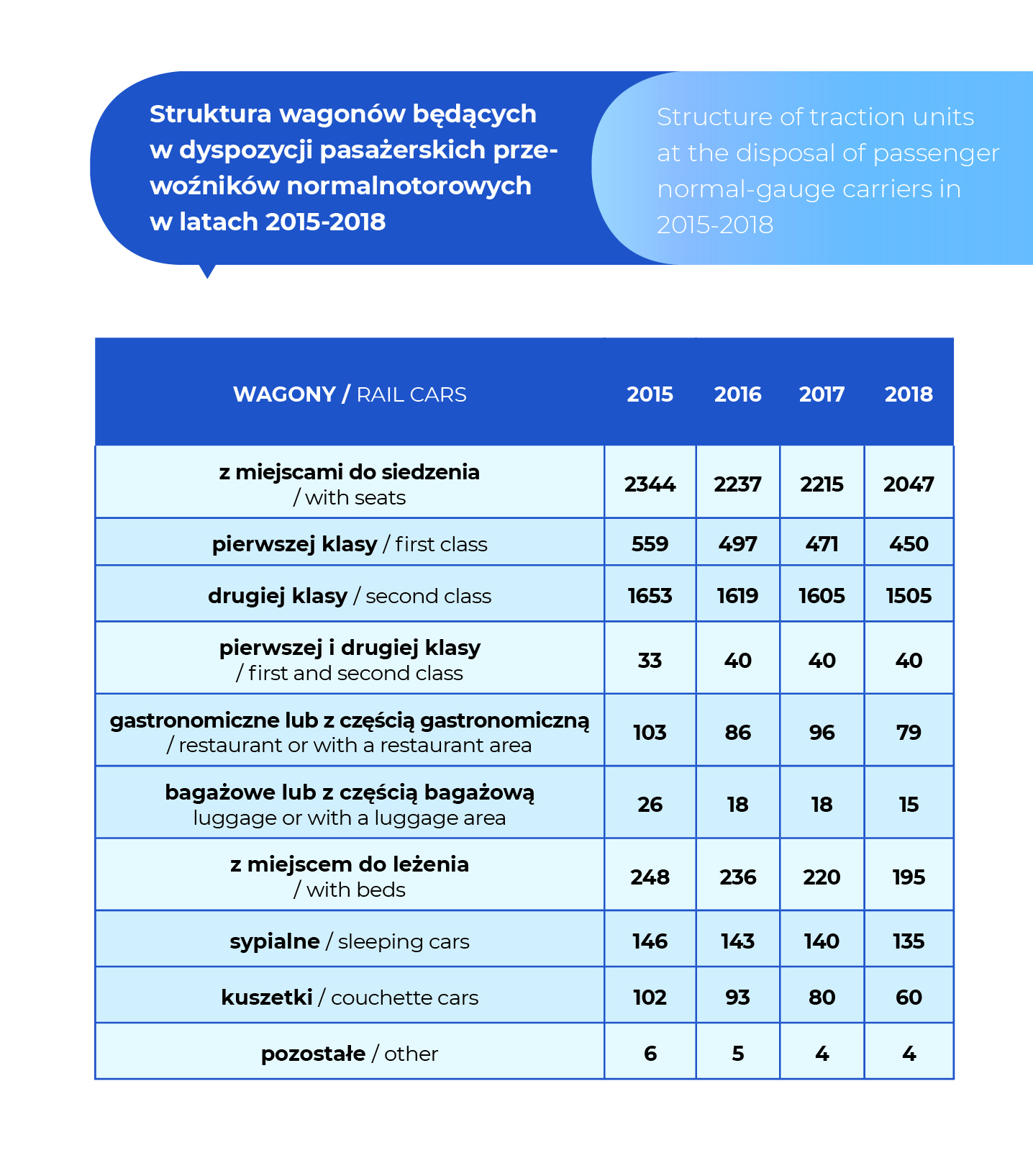
A locomotive by Newag
Railways in Poland
29 grudnia 2020

A locomotive by Newag
Modern rolling stock
Currently, 62% of vehicles are air-conditioned, 45% have fixed access to the Internet, 61% is fitted with closed-system toilets, 97% have bike storage area, and 61% are adapted to the needs of people with limited mobility. Carriers intend to continue investing in passenger rolling stock, which should further improve travelling comfort.
One of the oldest railway companies in Poland is NEWAG S.A., specialising in the production of electric multiple units, production and modernisation of electric locomotives and modernisation of diesel locomotives. Its electric multiple units called Impuls are now the most modern vehicles produced in Poland. Another company with more than century-long experience is H. Cegielski – Fabryka Pojazdów Szynowych. It is the only domestic producer and supplier of new wagons, both passenger and sleeping cars, adapted to the needs of international transport with the max. speed of 200 km/h, including those for shunting service on 1435/1520 mm tracks connecting two railway systems. The rail products of PESA from Bydgoszcz can be seen on the tracks throughout Poland and in many European cities. The company produces state-of-the-art electric multiple units and locomotives of various type: diesel, electric and multisystem. In addition, PESA has huge experience in repairs and modernisation of vehicles. It has provided such services since the second half of the 19th century when it started its operation as the Eastern Railway Repair Workshop. It is one of the first companies in Europe to have propagated the idea of multiple aggregation. Efficient, reliable and environment-friendly trains in Poland are also produced by: SIEMENS, STADLER, ALSTOM and BOMBARDIER, the latter offering, among other products, a modern single-track railway system INNOVIA 300.

Investment in the rolling stock park
Wide-range investment in the rolling stock park of freight carriers is planned by 2023. It will increase rolling stock availability and large expenditure on intermodal platforms should meet the current requirement. An advantage of the new rolling stock will be the possibility of increasing its effective use due to longer intervals between inspections. New locomotives are more efficient and are characterised by better parameters such as maximum capacity and speed. The planned investments are very expensive, so their performance will be determined by the market situation. Freight rolling stock operation is based on different forms of procurement of vehicles and wagons by carriers: refurbishment of the existing rolling stock, purchasing new rolling stock as well as lease or hire. Especially the two latter forms, despite related costs, increase the flexibility of the carrier in renewing the rolling stock park.
Planning investments in rolling stock the market situation forecasts for the following years must be taken into account. The competitive position of railway cargo transport will be stronger as a consequence of infrastructure overhauls and modernisation. Thanks to shorter travelling times, railways will be capable of improving their offer and increase rational use and management of their rolling stock. New and modernised locomotives and wagons in the following years will contribute to increasing efficiency and economical management of transport.

Safety systems
A railway traffic control (RTC) system is responsible for ensuring safe train traffic. Its function is to prevent uncontrolled travel and collisions of trains. Every RTC system must satisfy the requirements of applicable standards and be certified for use on railway lines. PN-EN 50126 standard determines reliability, readiness, availability and safety, while PN-EN 50128 describes procedures and technical requirements necessary for designing software for safe railway control and security electronic systems. On the other hand, PN-EN 50129 is a standard describing procedures for design, testing, acceptance and approval of electronic systems, subsystems and safety signalling devices used by the railway sector.
All new railway vehicles must comply with technical and operational requirements set forth in the Technical Specifications for Interoperability. Non-compliance with such requirements is only possible in strictly specified cases. At present, every new railway vehicle put into service for the first time must fitted with ERTMS/ ETCS. It has a huge influence on the development of railways and increasing the level of safety. According to their declarations, by 2024 railway companies will buy 448 new vehicles with ETCS or retrofit the existing ones with the system.